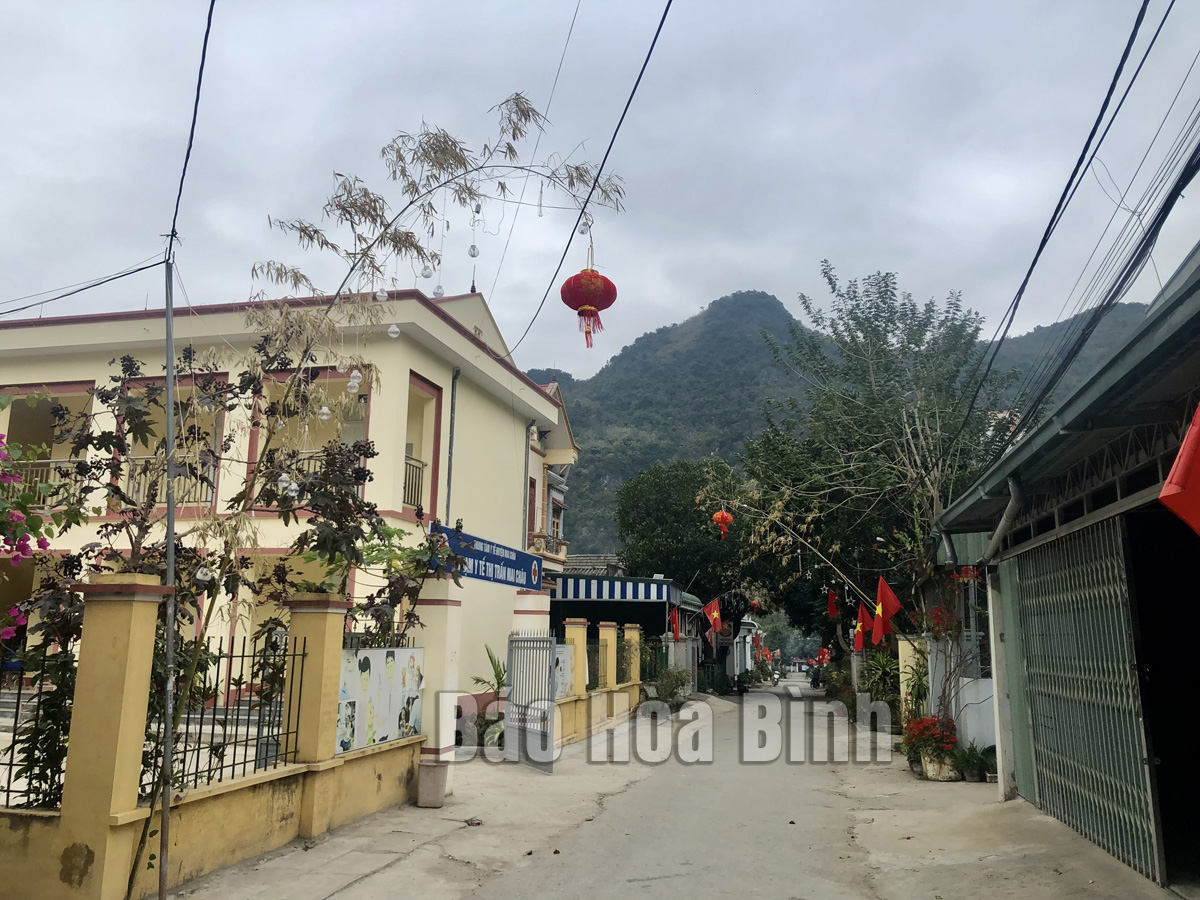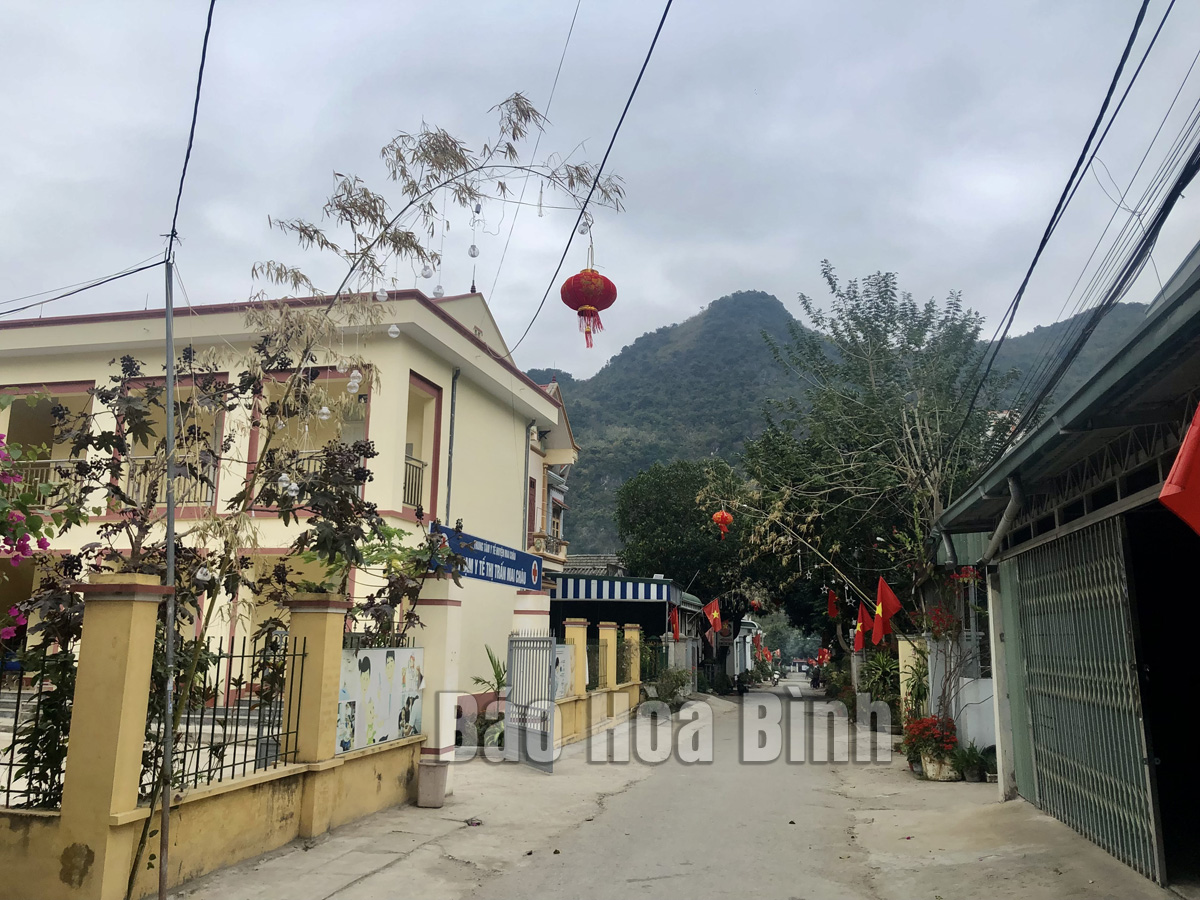



The people in Mai Chau town (Mai Chau) have set up Neu tree with the meaning of wishing for a new year of good luck, fullness and happiness.
To serve the ceremony to see off Mr. Cong and Mr. Tao back to heaven on December 23 (according to the lunnar calendar) and welcome the Lunar New Year in 2023, many people in Mai Chau district have set up Neu tree to welcome Tet. This is a typical culture that has remained in few rural areas. In Mai Chau district, walking along the inter-communal roads in the residential groups it can easily see the image of Neu tree with all kinds of colors these days. Neu tree is set up by the people right in front of the house with the wish of a year of luck, success, and many favorable things will come to the family.
Mr. Ha Cong Tech from Chieng Sai residential group, Mai Chau town says: The custom of setting up Neu tree on Tet holiday has a long history. Since I was a child, I have seen that my parents have plant Neu tree in front of the house’s gate every year. According to Mr. Tech, on New Year's Day, setting up Neu tree in front of the gate means worshiping the gods, the ancestors' spirits, exorcising demons, and driving away bad things from the old year.
According to the traditional custom, on the days right before Tet, the people choose the old, straight, longn bamboo or apricot trees with the fresh tops and leaves to set up right in front of the house’s gate. Today, setting up Neu tree not only has a spiritual meaning, but people also add the decorative LED lights to make the tree more beautiful, especially at night. The top of the tree is attached with a 5-pointed star with the national flag or lantern, creating a sense of solidarity and the national pride.
Mr. Lo Van Tiep from Sai Khao hamlet, Chieng Chau commune says: "I find it very meaningful to set up Neu tree. At night, there are beautiful flashing lights, during the day there is the country's flag fluttering. Not only my family but also the other households in the commune set up Neu tree in front of their house’s gates every year to pray for a new year full of luck, abundance, prosperity and happiness.
Previously, the custom of setting up Neu tree has been lost. Hoeever, in recent years, the movement of setting up Neu tree in Mai Chau district has been restored and developed by the people. Thanks to that, the tree selling service also becomes active on Tet holiday. Each Neu tree that has not been decorated costs from 100 to 120 thousand VND, and the tree that needs decoration costs from 600 to 700 thousand VND. These days, along with the blossoming color peaches, the lucky yellow color of kumquat trees, the image of Neu tree with the national flag fluttering in the wind, creating a colorful and joyful scene in the coming New Year and spring.
Ms. Ha Thi Vinh, the Chairman of the People's Committee of Mai Chau Town, says: "Setting up Neu tree to welcome the traditional New Year not only brings a joyful atmosphere of spring to welcome Tet, but it also contributes to preserving the ancient traditional beauty. At this time, most of the families in the town have set up Neu trees in front of the house’s gates, and they brightly decorate them to make the landscape more beautiful to welcome the new spring”.